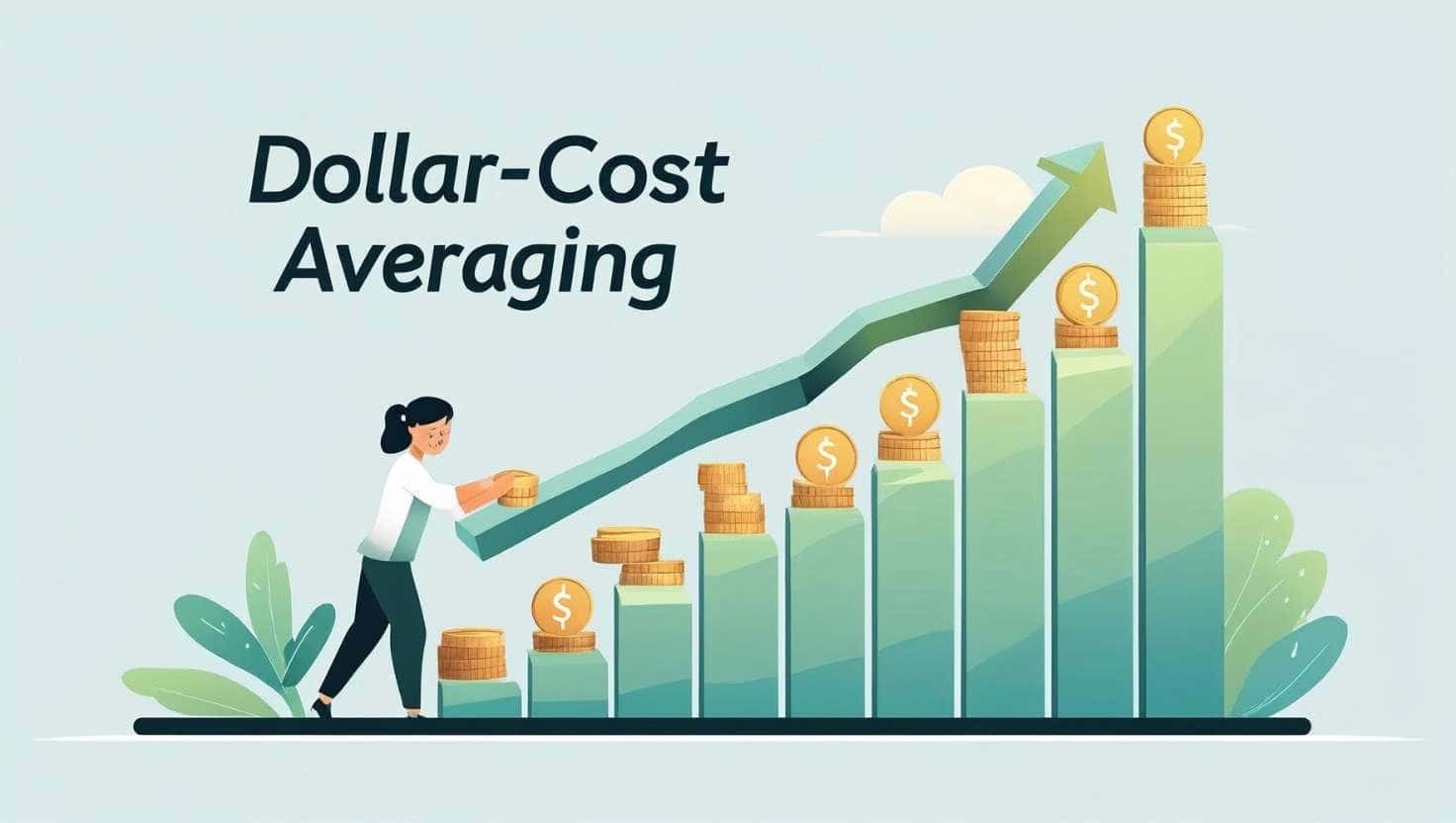Investing in a volatile market like 2025 can be intimidating—especially for beginners. That’s where Dollar-Cost Averaging (DCA) comes in. It’s a proven strategy that helps you grow your wealth steadily while reducing emotional decision-making.
In this article, you’ll learn what dollar-cost averaging is, how it works, and why it might be the smartest way to invest this year.
💡 What is Dollar-Cost Averaging?
Dollar-Cost Averaging is an investment strategy where you invest a fixed amount of money at regular intervals—regardless of market conditions.
For example, instead of investing $1,200 all at once, you might invest $100 every month for a year. This strategy spreads out your investment over time and reduces the impact of short-term volatility.
According to Investopedia, dollar-cost averaging reduces the risk of investing a large amount in a single investment at the wrong time.
🧠 How Dollar-Cost Averaging Works
Here’s how the DCA process typically works:
- Choose an investment (like an ETF, mutual fund, or stock)
- Decide your fixed investment amount (e.g., $100/month)
- Invest on a schedule (weekly, biweekly, or monthly)
- Stick to the plan — no matter what the market is doing
Over time, you buy more shares when prices are low and fewer shares when prices are high—lowering your average cost per share.
📈 Example of Dollar-Cost Averaging in Action
Let’s say you invest $100 every month in an ETF:
| Month | Price per Share | Shares Bought |
|---|---|---|
| Jan | $50 | 2.00 |
| Feb | $40 | 2.50 |
| Mar | $33 | 3.03 |
| Apr | $45 | 2.22 |
| May | $55 | 1.82 |
Total Invested: $500
Total Shares: ~11.57
Average Cost per Share: ~$43.22
Now imagine if you had invested the full $500 in January at $50—you’d only have 10 shares. DCA helped you buy more shares and lowered your average cost.
🔍 Why Use Dollar-Cost Averaging in 2025?
With market volatility expected to continue in 2025, dollar-cost averaging helps investors stay consistent and avoid panic-based decisions.
✅ Benefits of DCA:
- Reduces emotional investing
- Encourages long-term discipline
- Works well with auto-investing tools
- Minimizes timing risk
- Smooths out market ups and downs
🧰 Tools to Use for Dollar-Cost Averaging
Most beginner-friendly investing apps offer automatic DCA features. Here are some top picks in 2025:
- 🟢 Betterment – Robo-advisor with recurring investments
- 🔵 Fidelity – Manual and auto-investing options
- 🟣 M1 Finance – “Pie” investing with auto deposits
- 🟡 Robinhood – Schedule automatic recurring buys
🔗 Related: Best Investment Apps for Beginners
⚠️ Dollar-Cost Averaging: Things to Consider
- DCA doesn’t guarantee profits
- It works best with low-fee, long-term investments (like index funds or ETFs)
- You may miss out on gains if the market is consistently rising
- DCA is not ideal for lump sum investing in extremely low markets
🧩 Who Should Use Dollar-Cost Averaging?
DCA is perfect for:
- ✅ Beginners who want to build a habit
- ✅ People investing a portion of their paycheck
- ✅ Long-term investors focused on growth over decades
- ✅ Anyone afraid of investing at the “wrong time”
It’s especially powerful when paired with index funds, ETFs, and automated investing tools.
📝 Final Thoughts
Dollar-Cost Averaging is one of the most powerful investing strategies for beginners in 2025. It’s simple, stress-free, and ideal for building wealth over time—without worrying about market timing.
Whether you’re investing $10 a week or $500 a month, staying consistent is the key to long-term financial growth.

